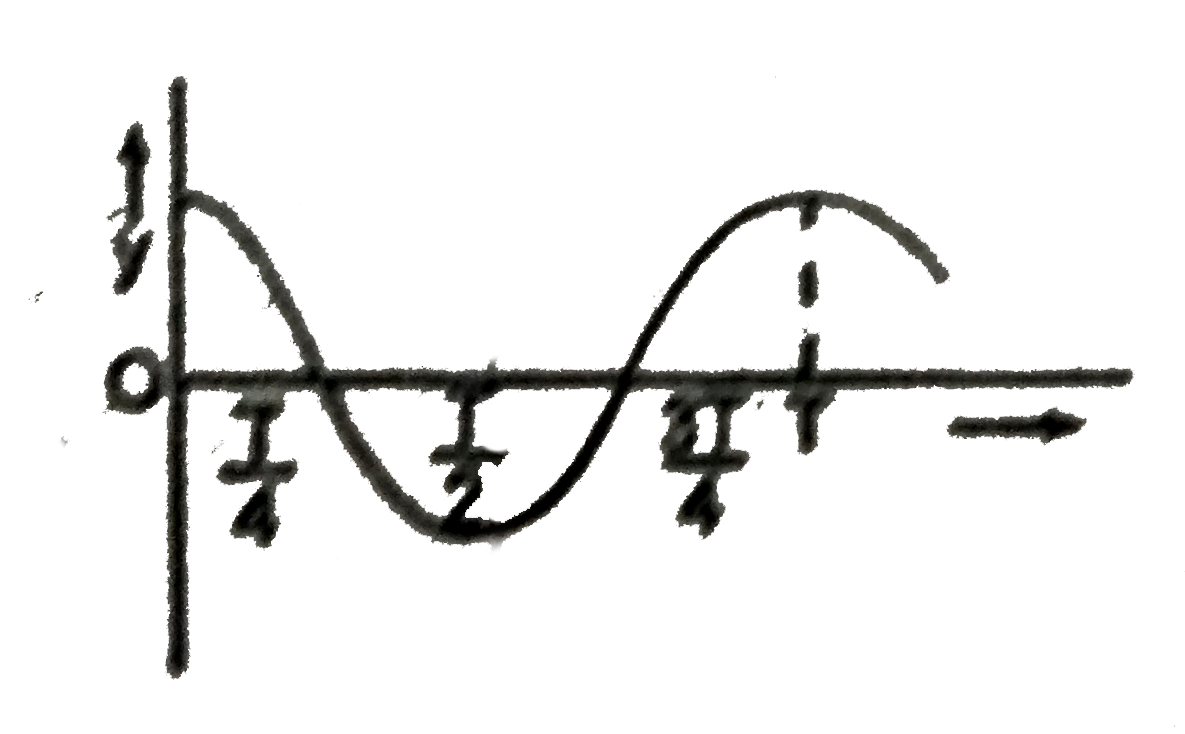The periodic time of a particle executing S.H.M. is12 second.After how much intervalfrom will its displacement be half of its amplitude ?
1s
2s
6s
3s
The correct Answer is:1
To solve the problem, we need to find the time at which the displacement of a particle executing Simple Harmonic Motion (SHM) is half of its amplitude. Here’s a step-by-step solution:
Step 1: Understand the parameters
Given:
- The periodic time T=12 seconds.
- The amplitude A (not given numerically but is a variable).
Step 2: Write the equation of motion for SHM
The displacement x of a particle in SHM can be described by the equation:
x(t)=Asin(ωt+ϕ)
Where:
- A is the amplitude,
- ω is the angular frequency,
- ϕ is the phase constant.
Since the particle starts from the mean position, we can take ϕ=0. Thus, the equation simplifies to:
x(t)=Asin(ωt)
Step 3: Find the angular frequency ω
The angular frequency ω is given by:
ω=2πT
Substituting T=12 seconds:
ω=2π12=π6 rad/s
Step 4: Set the displacement to half of the amplitude
We want to find the time t when the displacement x is half of the amplitude:
x=A2
Substituting into the equation:
A2=Asin(ωt)
Dividing both sides by A (assuming A≠0):
12=sin(ωt)
Step 5: Solve for ωt
The equation sin(ωt)=12 corresponds to:
ωt=π6orωt=5π6(since sine is positive in the first and second quadrants)
Step 6: Calculate t
Using ω=π6:
1. For ωt=π6:
t=π6π6=1 second
2. For ωt=5π6:
t=5π6π6=5 seconds
Step 7: Conclusion
The first time t when the displacement is half of the amplitude is:
t=1 second
The second time is t=5 seconds. However, since the question asks for the first occurrence, the answer is:
The answer is 1 second.
Given:
- The periodic time T=12 seconds.
- The amplitude A (not given numerically but is a variable).
The displacement x of a particle in SHM can be described by the equation:
x(t)=Asin(ωt+ϕ)
Where:
- A is the amplitude,
- ω is the angular frequency,
- ϕ is the phase constant.
x(t)=Asin(ωt)
The angular frequency ω is given by:
ω=2πT
Substituting T=12 seconds:
ω=2π12=π6 rad/s
We want to find the time t when the displacement x is half of the amplitude:
x=A2
Substituting into the equation:
A2=Asin(ωt)
Dividing both sides by A (assuming A≠0):
12=sin(ωt)
The equation sin(ωt)=12 corresponds to:
ωt=π6orωt=5π6(since sine is positive in the first and second quadrants)
Using ω=π6:
1. For ωt=π6:
t=π6π6=1 second
2. For ωt=5π6:
t=5π6π6=5 seconds
The first time t when the displacement is half of the amplitude is:
t=1 second
The second time is t=5 seconds. However, since the question asks for the first occurrence, the answer is:
The answer is 1 second.
Topper's Solved these Questions
- OSCILLATIONSBook:AAKASH INSTITUTE ENGLISHChapter:OSCILLATIONSExercise:ASSIGNMENT (SECTION-B )
Explore 25 Videos
- OSCILLATIONSBook:AAKASH INSTITUTE ENGLISHChapter:OSCILLATIONSExercise:ASSIGNMENT ( SECTION-C )
Explore 11 Videos
- OSCILLATIONSBook:AAKASH INSTITUTE ENGLISHChapter:OSCILLATIONSExercise:Try Yourself
Explore 86 Videos
- NUCLEIBook:AAKASH INSTITUTE ENGLISHChapter:NUCLEIExercise:ASSIGNMENT (SECTION-D)
Explore 10 Videos
- PHYSICAL WORLDBook:AAKASH INSTITUTE ENGLISHChapter:PHYSICAL WORLDExercise:ASSIGNMENT (Section-B)
Explore 4 Videos
Similar Questions
The time period of a particle executing S.H.M.is 12 s. The shortest distance travelledby it from mean position in 2 second is ( amplitude is a )
View SolutionThe potential energy of a particle executing S.H.M. is 2.5 J, when its displacement is half of amplitude. The total energy of the particle will be
View Solution
Knowledge Check
The total energy of the body executing S.H.M. is E. Then the kinetic energy when the displacement is half of the amplitude is
AE/2BE/4C3E/4D√3/4E
The time period of a particle executing SHM is T. After a time T/6 after it passes its mean position, then att=0 its :
View SolutionThe potential energy of a particle executing S H M is 25 J. when its displacement is half of amplitude. The total energy of the particle is
View SolutionA particle is executing shm. What fraction of its energy is kinetic when the displacement is half the amplitude ?
View SolutionThe KE and PE , at is a particle executing SHM with amplitude A will be equal when its displacement is
View SolutionThe KE and PE , at is a particle executing SHM with amplitude A will be equal when its displacement is
View SolutionThe potential energy of a particle execuring S.H.M. is 5 J, when its displacement is half of amplitude. The total energy of the particle be
View SolutionThe displacement time graph of a particle executing S.H.M. (in straight line) is shown. Which of the following statements is true?

View Solution